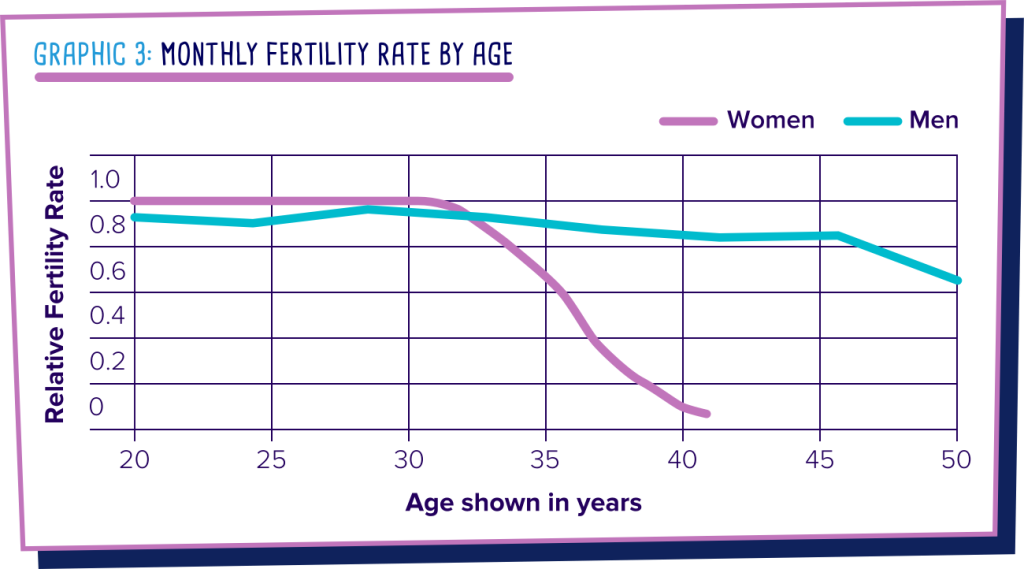14.3 Reproductive Decline as We Age
Humans are among very few species who experience a post-reproductive life. We used to believe only humans underwent menopause. However, we now know that elephants, some species of whale, and captive chimpanzees and bonobos will experience it. Because evolution primarily selects traits that improve reproduction, reproductive decline is an expected cost of a long life.
As the body begins to undergo senescence, it may no longer be sufficiently healthy to safely reproduce. Both men and women experience a loss of hormone production. A slowing active metabolism requires trade-offs to be made to maintain basic health. Men and women both produce estrogen and testosterone, though in differing amounts.
Estrogen helps coordinate long bone growth and health. Testosterone builds and retains muscle tone and strength. Both are also involved in metabolic processes. Estrogen regulates food intake, balances glucose and insulin, protects cognitive activity, and more, while testosterone also supports insulin regulation and may be involved in metabolic syndrome. It is for this reason the aged and elderly are often recommended to reduce caloric intake.
The rate of decline for these hormones are also different, as are their impacts on fecundity. The cost of carrying a pregnancy to term is much higher than sperm production, so women tend to experience complete cessation before men. On average, a woman’s fertility begins to decline in her early to mid 30s, and continues until her late 40s or early 50s when menstruation completely stops. This is because women are born with the total number of oocytes they will carry, and each month, the quantity and quality of these eggs reduces – especially if she is not using a hormonal contraceptive. Menopause is defined by the loss of menstruation for a consecutive 12 months – though this, too, is an imperfect measure.
In contrast, men continue sperm production throughout their lives, though the quantity and quality of sperm begins to reduce around their late 30s. This is because men produce spermatozoa daily after adrenarche.

the slowing, reduction, or complete cessation of fecundity.
calories and energy needed for daily activity, maintenance, and repair of the body from injury or stress; this is in addition to basal metabolism.
A type of hormone made by the body that helps develop and maintain female sex characteristics and the growth of long bones.
hormone made mainly in the testes (part of the male reproductive system); needed to develop and maintain male sex characteristics, such as facial hair, deep voice, and muscle growth.
the ability to produce an abundance of offspring or new growth; capable of conceiving and/or siring offspring.
a cell in an ovary; may mature into an ovum (egg) and combine with spermatozoa resulting in conception.
the mature motile male sex cell of an animal, by which the ovum/egg is fertilized, typically having a compact head and one or more long flagella for swimming; sperm.
an increase in the production of androgens by the adrenal cortex that usually occurs during the eighth or ninth year of life; promotes the onset of puberty.

